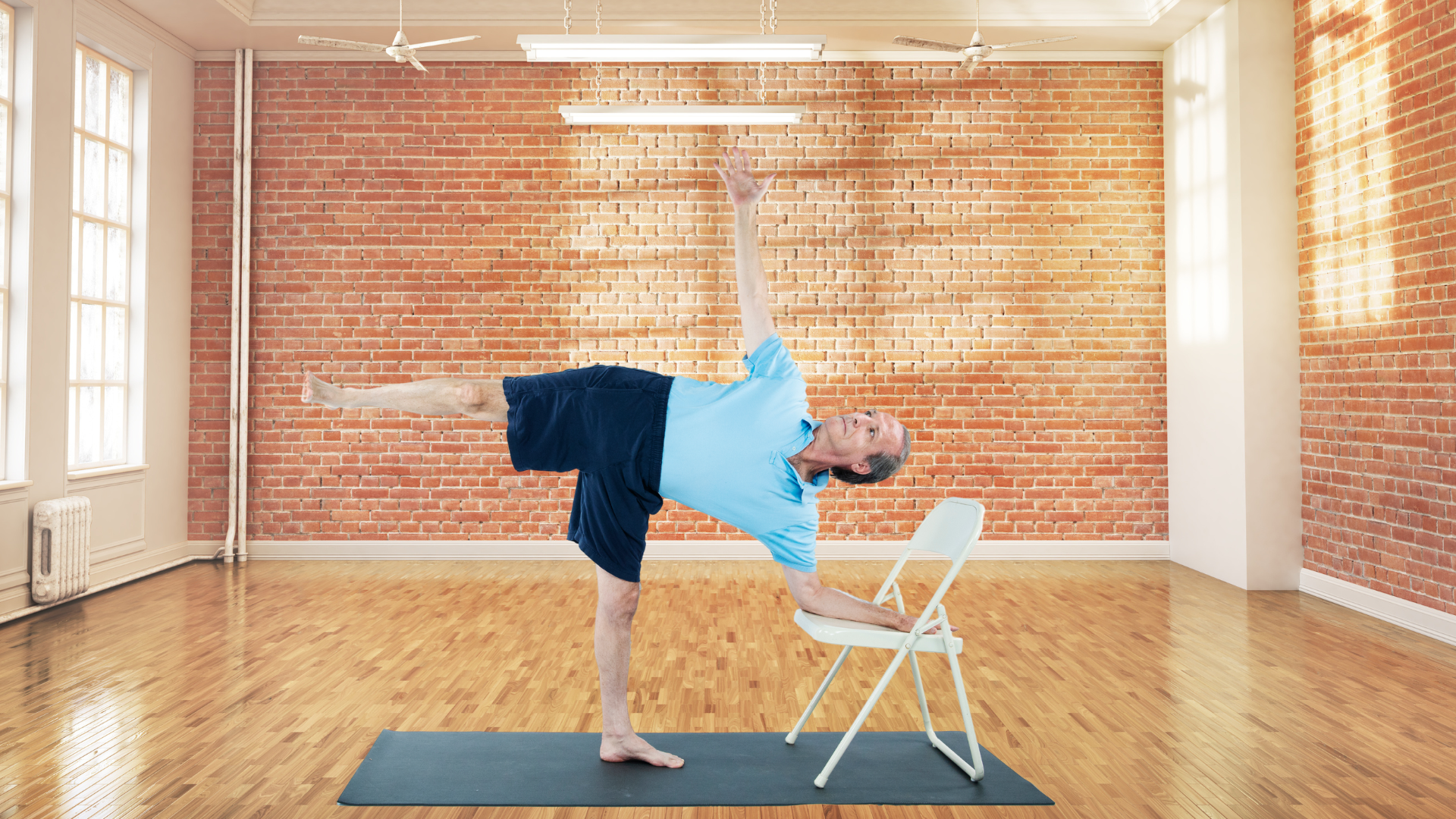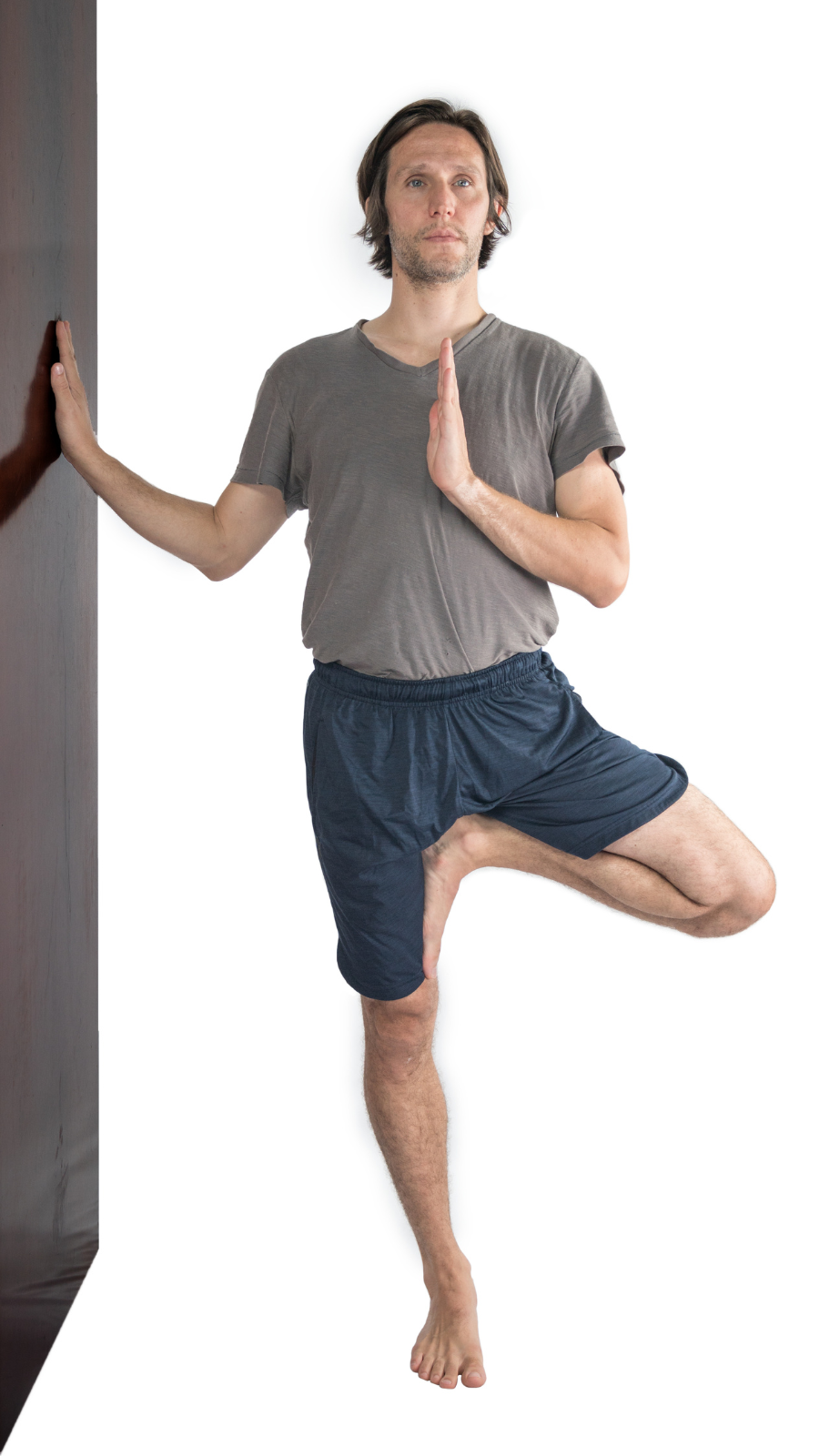4 Ways Yoga Can Help to Hone Your Balancing Skills

Article At A Glance
According to the Centers for Disease Control (CDC), 36 million older adults experience falls every year, resulting in more than 32,000 deaths. About 3 million people are treated in emergency rooms each year after taking a fall. Clearly, falls are epidemic among seniors. But all is not lost; we can cultivate our balancing skills at any age.
Years ago, a longtime yoga student I’ll call “Patricia” was by far the most balance-challenged person I’d encountered. Patricia attended my classes for about 25 years. While she was quite agile in most ways, her balance was forever shaky—and kind of scary for me as a teacher. When she was around 75 years old, we started beginning most of our classes with foot yoga.
My students enjoyed our foot yoga. Patricia enjoyed it so much that she began to practice foot yoga daily on her own. Within six months, she was stable in balancing poses, for the first time in decades. I share this story to emphasize that no matter your age or your lifetime of habits, you can improve your balancing skills.
WHAT IS BALANCE?

Balance is our ability to recognize our position relative to the objects around us, including the surface on which we’re standing or walking. A good sense of balance allows us to perform our daily tasks with a sense of stability and ease. For example, something as common as walking down the street and turning your head to talk to a friend requires a healthy sense of balance. Without balancing skills, simple activities become not only challenging, but can even be dangerous.
As we age, some of the factors that contribute to good balance can begin to decrease. Eyesight can dim. Inner ear problems can disrupt the vestibular system. Neuropathy can decrease proprioception.
Slippery or uneven surfaces, intoxication or illness can cause falls. But we may also be at risk because of a lack of attention or underdeveloped proprioception and interoception. The good news is, yoga can help. Many asanas are specifically designed to improve balance. And the centering of our minds on our bodies sharpens mindfulness, so that we’re more apt to recognize subtle signs of imbalance in our bodies before we fall.
HOW YOGA CAN HELP US DEVELOP BALANCING SKILLS

There are many yoga poses that support balance. All the standing poses—think Triangle Pose (Trikonasana), Warrior Poses (Virabhadrasana I, II, and III), etc.—can help strengthen our legs and cultivate balance. And, of course, the one-legged standing poses such as Tree Pose (Vrksasana) require balancing skills and therefore help us to develop them.
It’s important to challenge our balance in different ways. While we often think of standing balance poses when we’re hoping to cultivate balance, balancing in different orientations is also important. Moving the body while challenging our balance is also helpful. For example, shifting back and forth between bending forward and shifting back to an upright position in King Dancer Pose (Natarajasana) can help us increase our balancing skills.
Yoga is unique among physical practices in its ability to stimulate the vestibular system. Each time we change our head position, we create vestibular input. In most forms of physical practice—running, walking, bicycling, Zumba classes—our head remains upright. In a typical yoga practice, we change our head position in various ways.

HOW TO DEVELOP YOUR BALANCING SKILLS

Here are a few ways you can challenge and therefore cultivate, your balancing skills:
1. Practice a variety of balancing poses. When we think of yoga’s balancing poses, Tree Pose often comes to mind. Balancing on one leg is an excellent way to develop your skills. But there are other poses that can help as well. Poses such as Bird Dog Pose (Parsva Balasana) and Both-Hands-and-Feet Pose (Ubhaya Padangusthasana) can challenge your balance in different ways.
2. Practice yoga on a variety of surfaces. Most of the time, we practice yoga on a stable, even surface such as a wood floor. Conventional wisdom says that thinner yoga mats are better for practicing balancing poses. Recently I started practicing on a mat that’s thicker and squishier than the usual thin, stable mat. Balancing poses are a bit more challenging on this mat, but I can tell that the added challenge is helping me build balancing skills. So try practicing on a thick yoga mat, on carpeting, and when the weather is nice, you can play with practicing outdoors. Hiking on an uneven trail is also an excellent way to build balancing skills.
3. Increase vestibular input. Practice yoga poses that place your head in different positions. Here are a few examples:
- Head down: Downward Facing Dog Pose (Adho Mukha Svanasana), Standing Forward Bend Pose (Uttanasana), Wide-Legged Standing Forward Bend Pose (Prasarita Padottanasana), Upward Bow Pose (Urdhva Dhanurasana)
- Head sideways: Triangle Pose (Trikonasana), Side-Angle Pose (Parsvakonasana), Half-Moon Pose (Ardha Chandrasana)
- Facing the ground: Pyramid Pose (Parsvottanasana), Warrior III Pose (Virabhadrasana III), and all seated forward bends.
- Upside down: Headstand Pose (Sirsasana), Shoulderstand Pose (Sarvangasana), Elbow Balance Pose (Pinca Mayurasana), Handstand Pose (Adho Mukha Vrksasana), Legs-Up-the-Wall Pose (Viparita Karani)
4. Give your feet some TLC. Take a cue from my student, Patricia. Foot yoga can help increase your balancing skills. Foot TLC can include massaging your feet, but it can also include what I call “toe tricks.” These exercises involve lifting one or more toes and keeping the others down. Often, your toes will not cooperate, at least at first. You can help by using your fingers to hold down the toes that are not lifting. That way, you’re still training the other toes to lift. These exercises strengthen your feet and help you maintain healthy arches. Here are some ideas (thanks to yoga teacher Jenny Otto):
- Lift just your big toes, keeping the others down.
- Lift your other four toes, keeping your big toes grounded.
- Ground your big and little toes, lifting the middle three. Then from this position, ground your fourth toe, then your third so that you end up with just the second toe lifting.
- Lift just your pinky toes.
Most important is to remember that balancing, like all asana, is a practice, not a performance. Meet your body where it is. For example, if you need to stand close to a wall in a standing balance pose, please do so. Even with that little bit of extra support, you’re still developing the skill of balancing.

Also, read...
Warrior I Pose: 5 Strengthening Variations
Deepening Your Home Yoga Practice: An Interview with Judith Hanson Lasater
Do Yoga and Meditation Reduce Health-Care Utilization? What Studies Say
Related courses
Breath as Medicine: Yogic Breathing for Vital Aging
Yoga and Myofascial Release: Releasing Chronic Tension with the Bodymind Ballwork Method
Yoga and Detoxification: Tips for Stimulating Lymphatic Health

Charlotte Bell began practicing yoga in 1982 and began teaching in 1986. She was certified by B.K.S. Iyengar in 1989 following a trip to Pune. In 1986, she began practicing Insight Meditation with her mentors Pujari and Abhilasha Keays. Her asana classes blend mindfulness with physical movement. Charlotte writes a column for Catalyst Magazine and serves as editor for Yoga U Online. She is the author of two books: Mindful Yoga, Mindful Life, and Yoga for Meditators, both published by Rodmell Press. She also edits Hugger Mugger Yoga Products’ blog and is a founding board member for GreenTREE Yoga, a non-profit that brings yoga to underserved populations. A lifelong musician, she plays oboe and English horn in the Salt Lake Symphony and the folk sextet Red Rock Rondo whose 2010 PBS music special won two Emmys.



